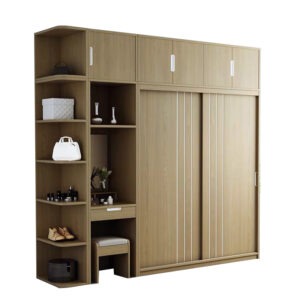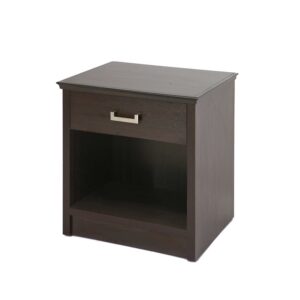More and more merchants have begun to import from China since COVID-19 in 2020. For an international trade order, we are most concerned about two things: one is the transaction price, which determines the profit of this order; the other is more. Another thing is the payment method. The order starts by sending money to China.
Here we will discuss the standard 9 payment methods in B2B business with China factories and suppliers. It does not involve payment details on B2C online stores and Alibaba.com.
This post will involve INCOTERMS such as EX-WORK, FOB and CIF because these are closely related to the payment method. We will also write another post detailing these trade terms.
TT Payment Term (Business Account)
Whta is TT
TT is the abbreviation of Telegraphic Transfer. What is telegraphic transfer meaning? It is a payment term that the remitting bank, upon the application of the remitter, sends a telegram/telex or SWIFT to its branch bank or agent bank (the receiving bank) in another country to pay a certain amount to the beneficiary. We do not explain A-Z details of TT here, but you can call local banks directly to get more information, or Google “Telegraphic Transfer” directly.
TT payment term is commercial credit, and you can agree with the China supplier to use this payment method in proforma invoice first; then, you need to prepare enough money to send a deposit or full amount of this order from local banks or sending online. Most China suppliers would have a foreign currency bank account to receive money from TT payment term, and they can send the documents (commercial invoice, packing list, bill of lading, certificate of origin China etc.) directly to the buyer without going through banks after the goods or services are delivering, and TT payment has been made.
Two types of TT
There are two types of telegraphic transfer payment in international business. The first one is T/T in advance, which means you would send all money to China manufacturers or suppliers before they ship the goods. Sellers are safe under this payment term because they get the full amount and then arrange container delivery. TT in advance has been widely used as a primary payment term when importing from China. Usually, the buyer would send a 20%-40% deposit to China seller after they confirm the order, then arrange a quality inspection when all goods are ready, and make a balance payment if everything is OK.
Some times the customers would pay more deposit or even 100% TT in advance, for example, one customer want to check our furniture products quality before confirming hotel furniture project order, he may order mock up furniture first, the amount would be small and it is more convenient to make 100% TT payment in advance. We may ask for 50% deposit in some custom furniture orders, or we would be in trouble if the client give up when all goods are ready, it is hard to resell bespoke furniture.
However, with the development of global economy, buyers and importers are gradually in a strong position in international trade, they are trying to use another type of TT payment term to reduce risks: TT upon delivery. In international trade practice, TT upon delivery means the buyers and importers make the balance payment after delivery of goods.
TT upon delivery is also very flexible and safe for buyers. In this payment method, customers usually pay 30% as a deposit and then arrange a 70% balance payment against the copy of B/L(bill of lading). All big and heavy items (e.g. furniture) imported from China are loaded in containers via sea shipping. FOB and CIF are the common incoterms, and sellers do not lose ownership of containers after they load & seal them. Shipping agents would send the original B/L to the China exporter after the vessel left China ports. The seller would scan the B/L and send copy images to the buyer by email, then arrange for DHL or FedEx to send documents to customers after they get the balance payment. But there is no B/L if the goods are shipped by air express. Buyers can receive the goods in their office or warehouse directly, so that most China suppliers may choose TT in advance as payment term in this situation.
Problems in TT payment term
Here we list some common problems and solutions in TT payment term, hope it can help you to understand this payment method more clearly.
1.Wrong beneficiary name or account number
The English name of most China companies in account detail is Chinese Pinyin, and it is not under English spelling rules. Some China suppliers may not make it clear in the proforma invoice, and then customers would write a wrong beneficiary name or account number when they arrange TT payment. The beneficiary’s bank would hang the remittance and inform the China seller to contact the buyer, then the buyer can make an amendment in his bank, or this TT payment can’t be released.
Please note that the seller would not receive any notice if both the beneficiary name and account number were wrong. However, the beneficiary’s bank would return the money to remitting bank in 1-2 months if there are no further instructions. Most China suppliers would check the bank slip copy carefully and ask customers to make corrections if there are mistakes.
Most China suppliers’ English names would end with “Co.,Limited” some buyers may write “Co.,Ltd” instead of “Co.,Limited” when they send money to China via TT, and most banks would take it as correct name. Some beneficiary name is long, and there is not enough space to write it down in the beneficiary name blank, you can write the rest in the address blank.
2.Delay payment in TT upon delivery
Usually, buyers and importers would make a balance payment against a copy of B/L, China exporters would get the full payment within 1-2 weeks upon delivery, but sometimes customers would delay the payment for various reasons such as long vacations, COVID-19 lockdown, shortage of funds, sudden changes in local market etc., this delay would make local port can’t release container timely, and there would have demurrage charge etc.
Some buyers’ companies even shut down when the vessel arrives at the local port, no one picks up the containers, and China exporters need to find other buyers there to accept the goods, or they need to return the container and goods to China, this is the worst result for China seller in T/T upon delivery payment term.
3.International trade fraud in TT
Buyers and Importers need to send money to China as a deposit in TT payment term. Some scammers use it and disguise it as China suppliers. They make a quotation with a low price when customers send inquiries, and it would attract some buyers to send the money to China via TT, scammers would disappear after they get the money, and some scammers even try to cheat the balance payment with fake pictures showing that all goods are ready.
China exporters also need to be careful in TT payment term. Buyers appoint their shipping agent in FOB incoterm, sometimes the agent can deliver goods directly to the buyer, without original bill of lading in international trades, the seller would lose both goods and money if buyer refuses to make payment after that. We will make another post to discuss all details about international trade fraud.
LC Payment Terms (Business Account)
LC is the second-largest payment method in China’s import and export business (TT is the largest payment term). Many large amount international orders use LC as the payment method, both buyers and sellers have their own banks as guarantors, to replace commercial credit with bank credit, the risk is low for both buyers and sellers under this payment term. But LC is more complicated than TT, here we will introduce LC payment details in importing from China.
What is LC from bank
Letter of Credit (LC) is a document issued by the bank with a conditional commitment to pay in international trade, buyer (applicant) would request the issuing bank to open LC after he has an agreement with the China supplier, then the seller (beneficiary) prepare the goods and make stipulated documents following the terms of LC, the issuing bank would check all documents after they receive it, then arrange payment if it is correct.
Buyer and seller may not trust each other in international trade, buyer is afraid of scammers or delay of goods delivery after TT in advance payment, seller is also worrying that they can’t get payment timely in TT upon delivery, so both buyer and seller need banks as guarantor to check documents and arrange payment, because bank credit is more trustable than commercial credit, LC is the tool of banks in this process.
Which countries use LC to import
LC is mandatory for importers in some countries and areas, such as Bangladesh, Pakistan, Sri Lanka, India, Iran, Algeria, Ethiopia, Nigeria, and Uzbekistan, we have dealt with LC from these countries. Customers from India and Sri Lanka can choose TT payment term in the invoice if the amount is small, clients from Bangladesh and Pakistan can’t make TT payment even the amount in the proforma invoice is small, LC is the only choice, they can go to U.A.E to send no more than 30% deposit money to China suppliers via TT. In Feb 2022, Bangladesh Congress approved new import policy ordinance (2021-2024), impor business companies can use TT payment if the invoice amount is under $500,000. One person can import goods with value under $10,000.
In most countries without foreign exchange control, buyers and importers can choose the payment term as they prefer, but some local governments would advise them to use LC to send money to China, it is safer than TT. Customers from Spain, Hungary, Tunisia, and Serbia are more likely to use LC payment term in our practice.
More and more countries are advising importers to use LC as main payment terms. On February 14th 2022, Central Bank of Egypt announced that LC would be the only choice im import business from March, and instructed banks to stop processing exporters’ DP & DA documents. Many Egypt customer asked China suppliers to change the date of bill of lading before February 12th (Anti-dated B/L), otherwise they would need necessary documents issued by the sea shipping company to prove it.
Letter of Credit Process
Here is the step-by-step LC payment process for import from China:
- The importer (buyer) and China supplier (seller) agree to use Letter of Credit (usually it is irrevocable LC at sight) as the payment term in proforma invoice.
- Importer sends an application to the issuing bank for a letter of credit draft form according to the commercial invoice. Why draft first? Because the applicant can revise LC draft unlimited times without any charge, but he has to pay for amendment in form LC each time.
- China supplier would check the LC draft after they receive it, and they may ask the importer to change some terms if they can’t accept it.
- The issuing bank would open a formal letter of credit if both buyer and seller reach an agreement on the LC draft form, then send it to the advising bank.
- The advising bank would check the LC and then send a notification of documentary credit to the beneficiary (seller).
- China exporter shall ship the goods and prepare the documents per the stipulations of LC, then send documents to the negotiating bank within the effective period.
- The negotiating bank would arrange payment to the beneficiary if all documents are in accordance with the LC’s terms and conditions, then send these documents to the issuing bank for payment.
- The issuing bank would pay the negotiating bank if they don’t find any problems in all documents, then inform the applicant (importer) to pay for the documents.
- The importer would have all documents after payment to the issuing bank, and then he can use these documents (e.g. Bill of Lading) to get the containers and goods.
Types of Letter of Credit
There are many types of letters of credit accoding to UCP600, which can be simply classified as follows:
1.Documentary Letter of Credit VS Clean Letter of Credit
Documentary LC is a letter of credit payable against documents only. These documents usually represent ownership of the goods (e.g. bill of lading) or show the delivery of goods (e.g. air waybill and rail waybill). Most LC in international trade is documentary LC.
Clean LC is a letter of credit payable against the clean draft. The bank would pay without shipping documents, but sometimes they may request the beneficiary to submit other documents such as commercial invoice, payment list etc.
2.Irrevocable Letter of Credit VS Revocable Letter of Credit
The issuing bank can’t amend or cancel irrevocable LC within the expiry date unless it has the beneficiary’s and relative parties’ consent. It also has the obligation of payment if documents provided by the beneficiary comply with the provisions of this L/C.
But in revocable LC, the issuing bank has the right to revoke LC at any time without consent of the beneficiary, but it should mark “REVOCABLE” on the LC. Pls note that revocable LC has been banned in the latest UCP600 (2007), we all use irrevocable LC in international trade now.
3.Confirmed Letter of Credit VS Unconfirmed Letter of Credit
Confirmed LC means this LC is confirmed by another bank, which would pay against documents complying with the terms of this LC, this bank is called confirming bank. Sometimes the seller does not trust the issuing bank, so he asks for confirmed LC to get double payment guarantee from both issuing bank and confirming bank.
There is no need to use confirmed LC if the issuing bank has good credit or the amount is small, this LC is called unconfirmed letter of credit.
4.Letter of Credit at Sight VS Letter of Credit at Usance
In LC at sight, the issuing bank or the drawee bank would make payment immediately (usually within 5 working days) upon receipt of documents that in accordance with the terms of LC. China exporters can get payment fast under LC at sight payment term, so it is widely used in international trade.
In LC at usance, the issuing bank or the drawee bank would make payment within time limit (usually 90 days), it mainly include Acceptance L/C and Deferred Payment L/C. Importers does not need to pay immediately under LC at usance, so they prefered to use this payment term to help incorporating funds and accelerate the circulation of the capital, but the payment day is longer, risks in local market and credit are hard to predict, most China exporters would use LC at sight instead of LC at usance.
5.Transferable LC VS Non Transferable LC
Transferable LC is a letter of credit transfered all or part of it to a second beneficiary by the advising bank or any other bank authorized by the issuing bank, it is at the request of the first beneficiary, and can be only transfered one time, the second beneficiary can’t transfer it again to the third beneficiary. There are notes “This Credit is Transferable” or “Transfer to be allowed” on transferable LC.
Transferable LC is usually applied by middlemen or trading companies in international trade. Importers may need to buy different kinds of goods from lots of China manufacturers, it is impossible to open many LCs to these China suppliers, some of them may not accept LC payment term, especially the amount is small, so importers would ranther to do business with middlemen or trading companies, and middlemen would request transferable LC as payment term, so that they can send this LC to China manufacturers, no need to pay cash for the goods. Middlemen or trading companies would earn profit or commision in transferable LC.
Non transferable LC is easy to know the meaning, benificary can’t transfer it to second benificary. All LC is non transferable unless there is “This Credit is Transferable” or “Transfer to be allowed” on it.
6.Red Clause Letter of Credit
Red clause LC is a special letter of credit, applicant (importer) allows the bank to make advance payment to the beneficiary (exporter) before the delivery of export documents, thus enabling the supplier to obtain funds before manufacturering, the issuing bank usually made this term in red color before, that’s why we call it red clause LC.
Importer affords more risks in red clause LC payment term, why they are willing to open red clause LC and make advance payment? The main reasons are:
- Certain typles of goods are shortage in market (such as face mask and medical equipment at the beginning of COVID-19 in 2020), importers (buyers) are eager to buy;
- Exporters are short of money, importers take advantage of it to lower prices;
- Importers transfer foreign exchange through banks and seize the opportunity to purchase goods in stock at favorable prices;
- Importers send orders with large amount and long production cycle (e.g. machinery equipment, ships, airplanes), exporters need to prepare material and require importers to pay some money in advance.
7.Revolving Letter of Credit
Revolving LC can be used several times for a certain period of time, it can be used again with the same amout after each use, and it is suitable for long-term contracts of partial shipping, importers can save bank charge by using revolving LC.
Normal letter of credit becomes invalid after full use, but revolving LC can be reused several times until the specified number of cycles expires or the specified total amount is used up. It can simplify the procedures of China exporters, which is conducive to the performance of the contract.
8.Back to Back Letter of Credit
Middlemen sign contract with importers (actual buyer) and manufacturers (actual suppliers) respectively, sometimes importers would open a non transferable LC, middlemen can’t transfer it directly to the manufacturers, but they can ask their banks to open a new LC, middlemen are applicant, and the beneficiary is actual suppliers in this new LC.
Back to back LC are mainly in international business with trading companies as middlemen, they use this kind of LC to to protect trade secret and ensure profit or commission. Actual buyer and actual supplier can’t know each other in back to back LC, middlemen are easy to win long term contract with the client.
9.Standby Letter of Credit
Standby Letters of Credit (SBLC) refers to the letter of credit issued for the purpose of loan financing or guaranteed debt repayment rather than making payment for commodity transactions in international trade. SBLC is a multi-functional financial product integrating guarantee, financing, payment and related services, it is widely used in international business due to its wide range of uses and flexible operation.
SBLC is a special form LC, which is a certificate that the issuing bank undertakes an obligation to the beneficiary. The beneficiary will be reimbursed by the issuing bank by drawing on the issuing bank under the terms of the SBLC accompanied by a declaration or documentary proof of the applicant’s failure to perform his obligations.










